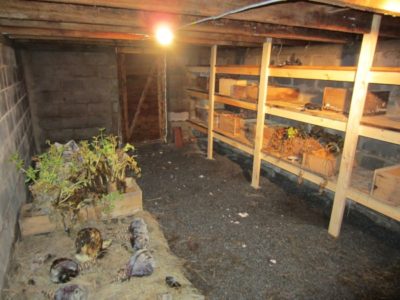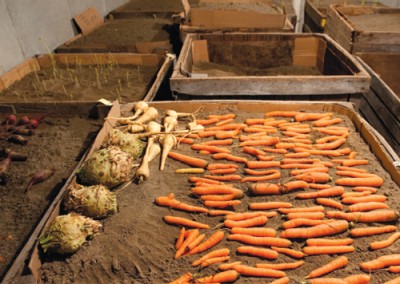Back in the old days, a root cellar was not a luxury, but instead was just as essential as our refrigerators are to us today.
A well-constructed root cellar can be a real life-saver — especially if you live off the grid, in remote areas or in places where power outages can be problematic. If you lose power and your refrigerator goes out, then your root cellar becomes an amazing backup.
You also can cut power consumption with a root cellar. Depending upon the size of your cellar, you can store as much as a restaurant-style walk-in refrigerator. However, you’re not using any electricity to do it.
As you may well know, root cellars are also a great place to take shelter in case of wind storms like tornadoes. Your house may be gone or damaged, but at least you weren’t in it when it was hit.
What Is a Root Cellar?
A root cellar is any storage space that uses the natural cooling, humidifying and insulating properties of the earth to preserve foods.
For your root cellar to work, it needs to maintain temperatures between 32 and 40 degrees Fahrenheit and a humidity of between 85 to 95 percent.
The Best Deals On Non-GMO Heirloom Seeds Are Right Here!
The reason you need both is that the temperature stops the growth of microorganisms and slows the release of ethylene gas, both of which work to decompose food faster.
The humidity stops your cold storage roots, tubers and vegetables from drying out and looking wilted.
What Type of Root Cellar Should I Build?
Many people will attempt to dig their root cellar right along the foundation of their home – the logic being they will have that nice cement wall for one side of the cellar if they have a basement. The problem with that is you’re undermining the foundation of your home. You’d be undermining a huge investment (your house) for something that you are likely going to build for free or at most a couple hundred dollars.
I’d recommend digging your cellar away from the house by at least 20 feet. The reasons are mostly for the security of your home and any possible groundwater issues.
Hillside root cellars work really well. You dig your cellar into the side of a hill and slope the inside floor down toward the opening for drainage. Yes, you can put in drain pipes and if you’d like to go that route, you should. You’ll end up with a dryer root cellar for sure. That being said, our forefathers didn’t have PVC and drain field pipes.
If you’re going with a pit style, then dig a square pit and then slope one end down to its floor, so you can lay in your steps over the top of that slope.
A word to the wise: There are those who recommend simply burying a garbage can for storing small amounts of food. This is a bad idea, as the garbage can can’t breathe. Your root cellar needs ventilation in order to get rid of ethylene gas.
8 Fundamental Tips
I won’t go into how to dig the hole and other such items. I’m sure you’re handy with a shovel. What I will cover here are eight fundamental tips that can really make or break your root cellar’s performance, long-term.
- In order to reach a nice stable temperature, you need to dig down at least 10 feet. In sandy, loamy soils you may need to go a little deeper than that to get the right temperature.
- Build your shelves and platforms out of wood, as it doesn’t conduct heat and cold nearly like metal does. This helps maintain steady temperatures.
- Don’t dig your root cellar near any big trees. You’ll have to chop the roots out while you dig, and they always grow back. Plus, if the tree falls over from wind or old age, it can rip your cellar up with it.
- To keep rot off your shelving and platforms, be sure to place them one to two inches away from the walls so they can stay dry.
- Packed earth floors work well and have been the standard flooring for hundreds of years. However, if you want to step it up just a bit, then pour a concrete floor. With such a floor, you won’t get dirt on your shoes to track back in the house. Plus, it keeps your wooden shelves and platforms off the ground so that they will last longer and not rot.
- Install an exhaust pipe so that you get air circulating and prevent the build-up of gases. Ventilation is critical to maintaining temperature and humidity, without which your food won’t preserve very well at all.
- Get a thermometer and a hygrometer to measure temperature and humidity, respectively. Maintaining the proper temperature and humidity levels are the pivotal points in constructing your root cellar.
- Follow all structural guidelines and best practices in your building process. Be sure to follow all applicable building and or construction codes. Also, ensure that you get any necessary permits before you begin.
That being said, building your root cellar can be a fun and relatively easy project, and you’ll enjoy the “fruits and roots” from it for many, many years.
What is your best advice on building and maintaining a root cellar? Share it in the section below:
Learn Dozens Of All-Natural Gardening Secrets. Read More Here.
 Off The Grid News Better Ideas For Off The Grid Living
Off The Grid News Better Ideas For Off The Grid Living





